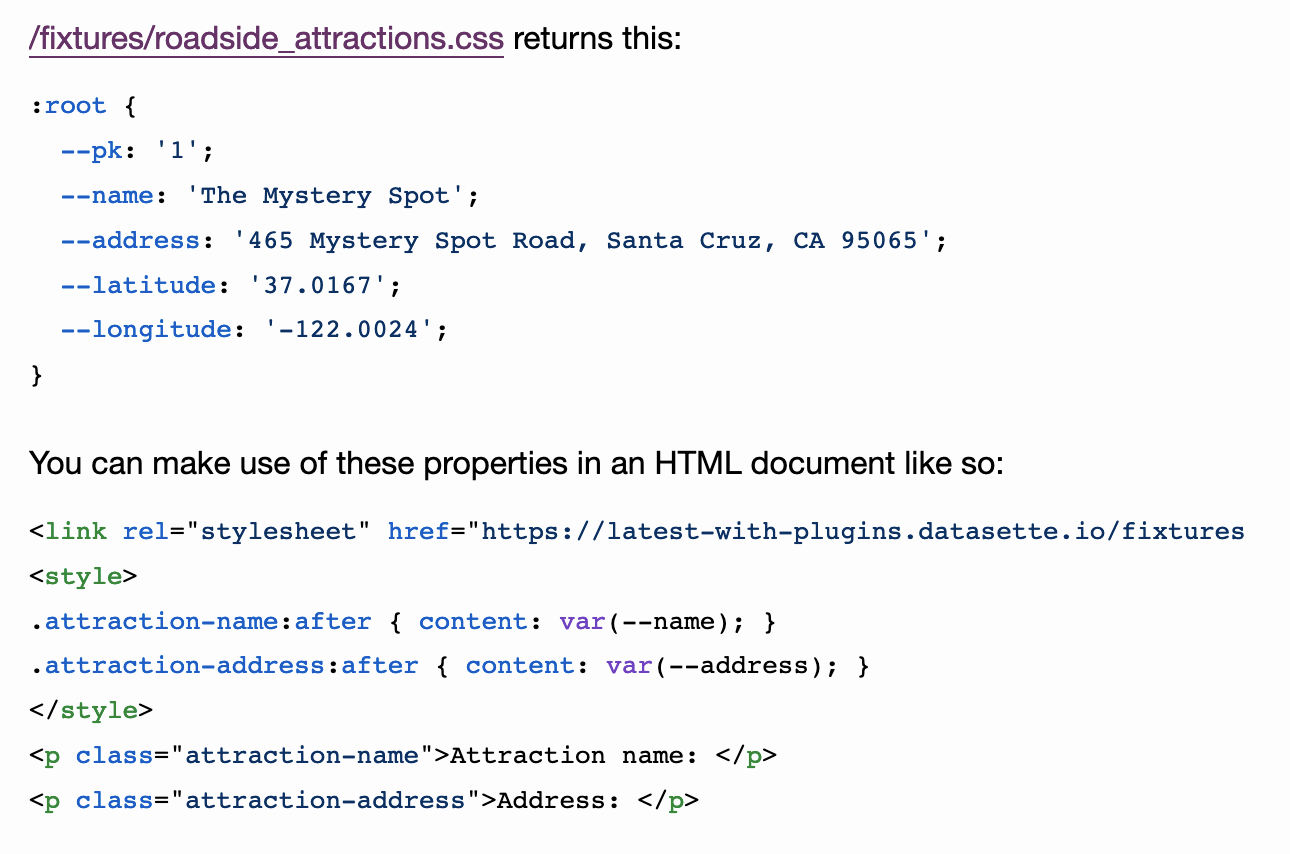7 posts tagged “css-custom-properties”
Also known as CSS variables.
2025
First look at the modern attr().
Chrome 133 (released February 25th 2025) was the first browser to ship support for the advanced CSS attr() function (MDN), which lets attr() be used to compose values using types other than strings.
Ahmad Shadeed explores potential applications of this in detail, trying it out for CSS grid columns, progress bars, background images, animation delays and more.
I like this example that uses the rows="5" attribute on a <textarea> to calculate its max-height - here wrapped in a feature detection block:
@supports (x: attr(x type(*))) { textarea { min-height: calc( attr(rows type(<number>)) * 50px ); } }
That type(<number>) is the new syntax.
Many of Ahmad's examples can be achieved today across all browsers using a slightly more verbose CSS custom property syntax.
Here are the tracking issues for CSS values support in attr() for Firefox (opened 17 years ago) and WebKit (16 years ago).
Minimal CSS-only blurry image placeholders (via) Absolutely brilliant piece of CSS ingenuity by Lean Rada, who describes a way to implement blurry placeholder images using just CSS, with syntax like this:
<img src="…" style="--lqip:192900">
That 192900 number encodes everything needed to construct the placeholder - it manages to embed a single base color and six brightness components (in a 3x2 grid) in 20 bits, then encodes those as an integer in the roughly 2 million available values between -999,999 and 999,999 - beyond which range Lean found some browsers would start to lose precision.
The implementation for decoding that value becomes a bunch of clever bit-fiddling CSS expressions to expand it into further CSS variables:
[style*="--lqip:"] { --lqip-ca: mod(round(down, calc((var(--lqip) + pow(2, 19)) / pow(2, 18))), 4); --lqip-cb: mod(round(down, calc((var(--lqip) + pow(2, 19)) / pow(2, 16))), 4); /* more like that */ }
Which are expanded to even more variables with code like this:
--lqip-ca-clr: hsl(0 0% calc(var(--lqip-ca) / 3 * 100%)); --lqip-cb-clr: hsl(0 0% calc(var(--lqip-cb) / 3 * 100%));
And finally rendered using a CSS gradient definition that starts like this:
[style*="--lqip:"] { background-image: radial-gradient(50% 75% at 16.67% 25%, var(--lqip-ca-clr), transparent), radial-gradient(50% 75% at 50% 25%, var(--lqip-cb-clr), transparent), /* ... */ linear-gradient(0deg, var(--lqip-base-clr), var(--lqip-base-clr)); }
The article includes several interactive explainers (most of which are also powered by pure CSS) illustrating how it all works.
Their Node.js script for converting images to these magic integers uses Sharp to resize the image to 3x2 and then use the Oklab perceptually uniform color space (new to me, that was created by Björn Ottosson in 2020) to derive the six resulting values.
2021
APIs from CSS without JavaScript: the datasette-css-properties plugin
I built a new Datasette plugin called datasette-css-properties. It’s very, very weird—it adds a .css output extension to Datasette which outputs the result of a SQL query using CSS custom property format. This means you can display the results of database queries using pure CSS and HTML, no JavaScript required!
datasette-css-properties (via) My new Datasette plugin defines a “.css” output format which returns the data from the query as a valid CSS stylesheet defining custom properties for each returned column. This means you can build a page using just HTML and CSS that consumes API data from Datasette, no JavaScript required! Whether this is a good idea or not is left as an exercise for the reader.
Custom Properties as State.
Fascinating thought experiment by Chris Coyier: since CSS custom properties can be defined in an external stylesheet, we can APIs that return stylesheets defining dynamically server-side generated CSS values for things like time-of-day colour schemes or even strings that can be inserted using ::after { content: var(--my-property).
This gave me a very eccentric idea for a Datasette plugin...
2008
Why “variables” in CSS are harmful. Bert Bos thinks constants or macros in CSS will make it harder to learn. I personally think that the problem with CSS isn’t the learning curve, it’s how difficult it is to maintain later—and I see macros as a great way of reducing that maintainability burden.
CSS Variables. Hooray! My number one requested CSS feature (and I know I’m not alone), proposed by Daniel Glazman and David Hyatt so I imagine we’ll see it trialled in WebKit pretty soon.
